Climate Change Science 2014 - Summary by John Shepherd | Global Challenges UOSM2010


Complexity Seminars and Interviews
The Complex Systems Simulation Seminar Series (CS4) welcomed speakers from a variety of prestigious institutes, many from across the globe. This series provided for the student cohorts, yet it was imperative that events remained free and open to the full research community at the University.
Each talk introduced research challenges in a particular complex systems domain along with some current modelling work. The pitch was at a general academic audience with subjects spanning any complex systems, e.g. climate, ecological environmental, evolutionary, nanoscience, neuroscience, networks, social, along with the many different approaches to studying them, e.g., mathematical and simulation modelling, analysis, experimentation, and philosophy. A selection of recorded interviews accompanied the talks.
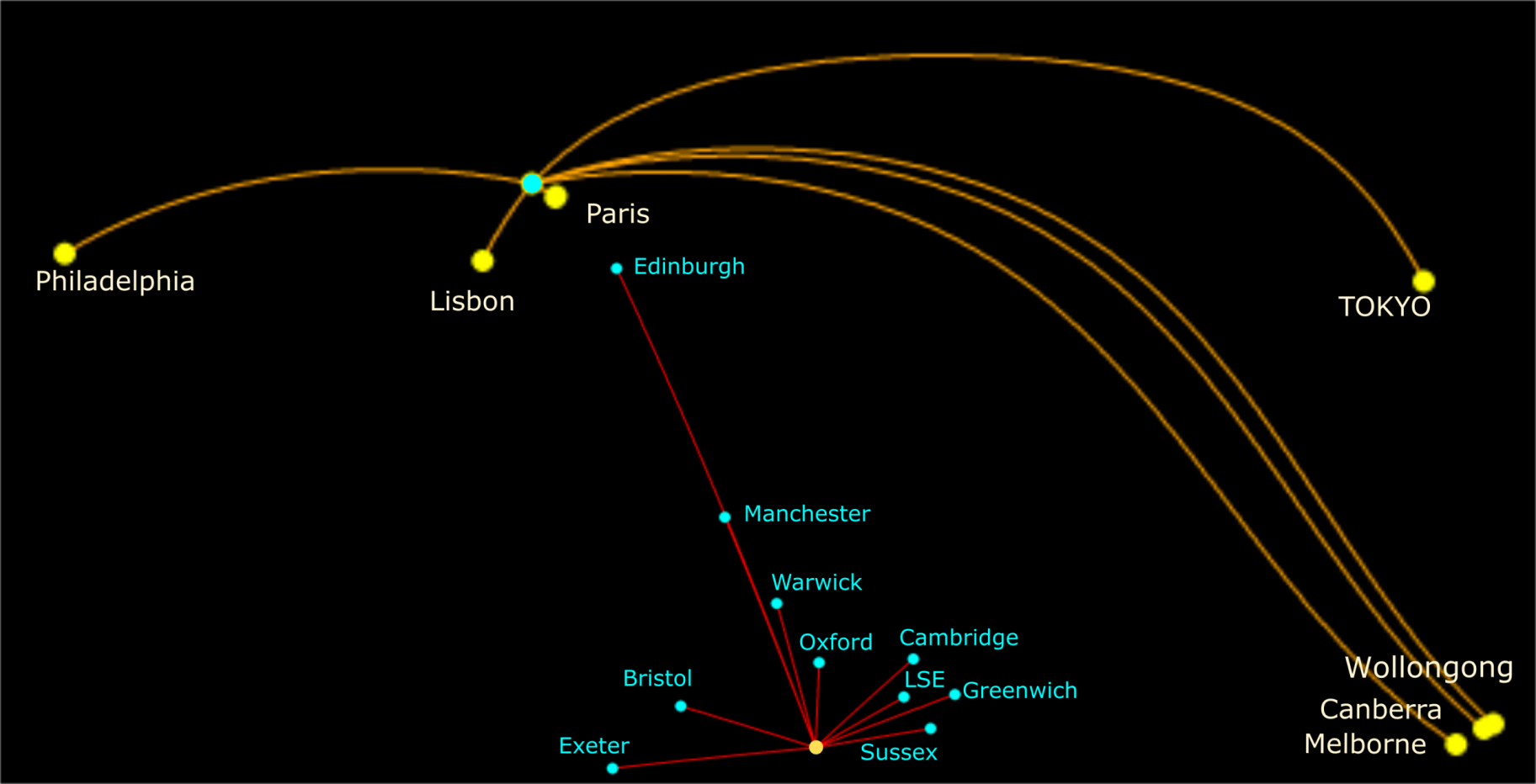 The CS4 series attracted speakers from across the globe
The CS4 series attracted speakers from across the globe
Interviews
- Professor Doyne Farmer: my complexity research at the Santa Fe Institute and economic work at the University of Oxford.
- Paul Ormerod: how economic theory needs to reflect the complex world in our decisions.
- Dr Roman Frigg: significant limitations of simulation to produce robust predictions.
- Dr Daniel Polani: my artificial life research.
- Professor Nigel Gilbert talks about complexity and social science
- Professor Mark Newman talks about complexity and network science
- Professor Scott Moss: producing complex simulations of economic systems in the early 1970s and my, at times, fractious relationship with economists ever since.
- Dr Rachel Armstrong: transitioning from practising medicine in New Zealand to melding art, architecture and complexity science in London.
- Dr Kenny Smith: combining experiments with real and simulated people.
- Dr Alex Penn: employing complexity science in the real world.
Seminars
- Phase transitions in network growth: from street patterns to neural networks Enzo Nicosia, Queen Mary University
- Some random walks in space weather Mervyn Freeman. British Antarctic Survey, Cambridge:
- Networks and synchronisation: mathematical modelling of socio-technical decision making systems Alex Kalloniatis, Defence Science and Technology Organisation, Canberra, Australia.
- A long-term vision for computational economics Doyne Farmer , University of Oxford
- Molecules Designed for Chemical Network Memory and Non-Genetic Inheritance Chris Gordon-Smith, SimSoup project
- How congestion shapes cities: a physicist’s perspective Remi Louf, Institut de Physique Théorique,
- Improving the representation of cognitive agents in agent-based modelling and simulation Prof Lin Padgham, RMIT
- Morphogenetic Engineering: the Two-Way Bridges Between Biomodelling, Bioinspired Engineering, and Bioengineering Dr Rene Doursat, Drexel University,
- Can Chemicals Think? Learning and Approximate Bayesian Inference In Simulated Reaction Systems Dr Simon McGregor
- Laplace’s Demon and the Adventures of his Apprentices Roman Frigg London School of Economics
- Simplicity in Practice: The Failure of Social Modelling Prof Scott Moss
- A Hitchhiker’s Guide to Complexity Dr Rachel Armstrong, The University of Greenwich
- Chaos and noise in game theory and evolutionary dynamics Dr Tobias Galla: The University of Manchester
- Language structure is a trade-off between compression and expression Kenny Smith: University of Edinburgh
- Individuals versus Groups in Evolutionary Biology Prof. Samir Okasha: University of Bristol
- Epistatic constraints in evolution, theory and practice. Dr Guillaume Achaz, Atelier de BioInformatique
- Spin models of critical phenomena in systems with multi-scale dynamics Dr Ondrej Hovorka, University of Southampton,
- Attempting to model all life on earth – a proof of concept General Ecosystem Model Dr Mike Harfoot, United Nations Environment Program and Microsoft Research Cambridge
- Population-based microbial computing Prof Martyn Amos, Manchester Metropolitan University,
- Bubbles and a planet: the connection and why it matters Dr Helen Czerski, University College London
- Visual route navigation in ants: a situated and embodied approach Dr Andrew Philippides, University of Sussex,
- Games, networks, and climate change Dr Hywel Williams, University of Exeter
- The complex challenge of achieving sustainable livelihoods in coastal Bangladesh Dr Attila Lázár, University of Southampton,
- Climate Policy: How to Cooperate in an Uncertain World Dr Francisco Santos, , Instituto Superior Técnico, Lisbon
- How do we know how much atmospheric CO2 is from natural vs human-driven sources? Prof Paul Palmer, University of Edinburgh,
- Social Fluids Professor Matthew Turner, University of Warwick,
- The economics of sustainability Prof Doyne Farmer, University of Oxford
- Informational Principles in the Perception-Action Loop Dr Daniel Polani: The University of Hertfordshire
- Gaia before life: Autocatalysis and the Prebiotic Ecosystem Dr Nathaniel Virgo, University of Tokyo
Language structure is a trade-off between compression and expression
Kenny Smith: University of Edinburgh: Language is unique among the communication systems of the natural world in that it is structured: we convey complex meanings by constructing complex utterances in a rule-governed manner. While structure in language is sometimes explained as a consequence of biological evolution of the human capacity for language, I will present a mix of experimental and simulation data which shows that linguistic structure arises as a result of cultural evolution. Languages change as a consequence of being learned and used in populations, in response to pressures for compressibility (arising from language learning) and expressivity (arising from language use). Pressure for compressibility but not expressivity leads to degenerate languages which are easy to learn but not useful for communication. Pressure for expressivity but not compressibility leads to languages which are communicatively functional but unstructured and unlike human language. Only when both pressures are at play do we see structure emerge: structured languages are compressible and yet still communicatively functional. Importantly, the extent to which languages need to be compressible and expressive depends on the structure of the populations they are transmitted and used in: we should expect to see differences in language structure which are modulated by differences in the social structure of human populations, which would be unexpected if language structure were a reflection of universal features of human biology.Individuals versus Groups in Evolutionary Biology
Prof. Samir Okasha: University of Bristol: I will examine philosophical and conceptual problems within the field of social evolution theory, with a particular emphasis on three themes: hierarchical organization in the biological world, the tension between individual and group interests, and the ‘levels of selection’ discussion in evolutionary theory. I argue that social evolution theory is in need of careful philosophical scrutiny, and also offers a novel way of thinking about many issues in traditional social and political philosophy.Informational Principles in the Perception-Action Loop
Dr Daniel Polani: The University of Hertfordshire: Ashby’s Law of Requisite Variety (1956) and, in last years, especially its later rediscovery and extension by Touchette and Lloyd (2000, 2004) have indicated that Shannon information acts as fundamental “currency” constraining the potential organisation and “administration” of cognitive tasks. In particular, there is increasing evidence that decision processes in biological organisms in fact exploit the limits implied by aforementioned work, and can therefore be subject to analysis with respect to information-theoretical optimality principles.Under this hypothesis, many aspects of biologically plausible cognitive processing can be treated informationally, requiring only high-level constraints without having to specify detailed mechanisms. This gives rise to novel tools not only for high-level analysis of biological cognitive systems, but also for purposes of prediction and construction of biologically plausible artificial cognitive models.
Social Fluids
Professor Matthew Turner, University of Warwick: Bird flocks, insect swarms and fish shoals resemble fluids made up of many individuals in which the controlling interactions are social rather than physical in character. It may be that these animal systems tell us something about human societies or inform developments in swarm robotics. Some progress has been made recently on reverse-engineering candidate models for the interactions between animals that are local in space, either in a metric-based or topological sense. A question that has been largely overlooked is whether the interactions should be expected to be local in the first place. I will present evidence that they must have a non-local character and, furthermore, that there is a natural choice for this that is consistent with the cognitive limitations of animal vision. This leads us to propose a non-local hybrid-projection model. We use this model to make predictions about the global character of the swarm and present experimental data on bird flocks that confirm these predictions. Finally, I will discuss how these models are naturally associated with evolutionary fitness.Morphogenetic Engineering: the Two-Way Bridges Between Biomodelling, Bioinspired Engineering, and Bioengineering
Dr Rene Doursat, Drexel University: Complex systems are large sets of elements that interact locally and produce non-trivial collective behaviours. Natural complex systems, in particular biological, can be a powerful source of inspiration for future technologies. Understanding them by modelling and simulation can help create a new generation of autonomous and adaptive artificial systems, with potential “self x” properties mostly absent from traditional engineering. Conversely, closing the loop, these new computing principles can be applied to biomedical challenges, from image processing to “bioware” implementations such as synthetic biology or tissue engineering.Historically, along these lines, the observation of neurons and genes has given rise to machine learning and evolutionary algorithms. However, these disciplines have also largely shifted their focus to classical optimisation and search problems, away from distributed and emergent computation. In this talk, I want to show new avenues of biomodelling and bioinspired design stressing the importance and benefits of genuine self-organisation in architectured systems, as exemplified by the growth of multicellular organisms. I will present a recent field of research, “morphogenetic engineering”, which explores the design of complex morphologies that can develop without centralised or external control. Then, I will describe three studies illustrating the possible two-way transfers between modelling and engineering in biological complex systems (1) a 3D agent-based simulation of early animal embryogenesis drawing from, and compared to, real microscopy imaging data, (2) an artificial evo-devo model of animated organisms in a 3D virtual world, and (3) an attempt at creating a programming language framework to “compile” desired spatial functions or behaviours in a population of bacteria.
Can Chemicals Think? Learning and Approximate Bayesian Inference In Simulated Reaction Systems
Dr Simon McGregor: In biology, cognitive processes have been extensively studied in whole organisms, nervous systems, and perhaps to a lesser extent immune systems. The possibility of analogous phenomena at the sub-cellular level has been given relatively little attention. I describe a series of simple experiments showing that potential chemical learning mechanisms can be identified by in silico evolution of simulated reaction systems. In fact, the dynamics can be readily interpreted as an approximate implementation of Bayesian inference. I discuss these results in the context of the complex relationships between information theory, thermodynamics, cognition and life.Laplace’s Demon and the Adventures of his Apprentices
Roman Frigg London School of Economics: The sensitive dependence on initial condition associated with nonlinear models imposes limitations on the models’ predictive power. These limitations have been widely recognised and extensively discussed. In this paper we argue that the severity of these limitations notwithstanding, we haven’t seen the worst yet: it is structural model error rather than sensitive dependence that truly limits our ability to make useful predictions with nonlinear models. If a nonlinear model has only the slightest structural error, then its ability to generate useful prediction is lost. This puts us in a worse epistemic situation than sensitive dependence because we can guard against the effects of sensitive dependence by replacing deterministic predictions by probabilistic predictions, a route that is foreclosed in the case of structural model error. We reach this conclusion by retelling the tale of Laplace’s demon, but with a twist. In our rendering the Demon has two apprentices, the Freshman Apprentice and the Senior Apprentice, who have abilities that fall short of the Demon’s in ways that turns them into explorers of sensitive dependence and structural error respectively. We discuss in what way the problems we describe affect actual modelling projects and end by making a tentative suggestion about how to guard against the worst effects.Simplicity in Practice: The Failure of Social Modelling
Prof Scott Moss: Mainstream economics and disciplines such as political science that have been influenced by it are bad science because they rest on theories and models that neither describe any world we can imagine ever to exist nor, unless there is no significant change or volatility, forecast accurately anything about the worlds we inhabit. Econometric models are just complicated means of extrapolation and other approaches such as dynamic stochastic general equilibrium models ignore central and dominating features of social processes, especially social interaction and influence.The main justification for producing social models that describe worlds of fantasy is that the models are simple. Sometimes, this simplicity is justified by appeal to a distortion of Occam’s Razor. In my talk, I am going to address the issue of simplicity in modelling. I will accept a dictum of Einstein that theories should be comprised by “irreducible basic elements as simple and as few as possible without having to surrender the adequate representation of a single datum of experience.” The key issue here is what is meant by the clause starting “without having to surrender ….”
The issue of simplicity is also important when assessing the value of applications of physical modelling approaches to social modelling coming under the heading of “complexity science”. These typically do capture social interaction and, often enough, endogenous volatility but they are also very simple and there is no assessment of the extent to which they misrepresent any actual data of experience or fail to capture essential features of relevant social processes.
I will look at ways of incorporating the data of experience into social model designs and implementations; I will describe a process for determining which data of experience are to be captured in our models; I will suggest an approach to establishing measures of simplicity of models and I will demonstrate some prototype software for validating outputs from simulation models by linking them explicitly to specific data of experience.
A Hitchhiker’s Guide to Complexity
Dr Rachel Armstrong, The University of Greenwich: This talk offers a multi-disciplinary view of complexity from the perspective of an informed amateur – an ideas hitchhiker – curating concepts relevant to its philosophical, technological and cultural importance. These ideas are co-ordinates for a hitchhiker’s map that provokes discussion about the theory, method and application of complex systems in addressing cultural agendas and how they may work as a counter point to prevalent practices. Of particular interest is how complexity may offer alternative technological systems to machines, which shape our Modern era. Although complexity is still an emerging practice and not a ‘cure-all’ to the significant challenges that we face this century, it may offer a point of reflection on the processes that underpin human development – to identify opportunities where the interests of humanity and the environment may be one and the same – say for example, by considering the Earth to be a giant ‘natural’ supercomputer.Visual route navigation in ants: a situated and embodied approach
Dr Andrew Philippides, University of Sussex: The use of visual information for navigation appears to be a universal strategy for sighted animals. One particular group of expert navigators are the ants. The broad cross-disciplinary interest in studies of ant navigation is in part due to their small brains; biomimetic engineers take inspiration from elegant and parsimonious control solutions, while biologists look for a description of the minimal cognitive requirements for complex spatial behaviours. We also take an interdisciplinary approach to studying visual guided navigation of ants where we emphasise tenets familiar to Adaptive Systems practitioners; to get a full understanding of complex behaviour and how it emerges from the interaction of sensory system, body and environment, you must study natural behaviour in the natural habitat.Behavioural experiments and natural image statistics show that visual navigation need not depend on the recognition of objects. Modelling suggests how simple behavioural routines enable navigation using familiarity detection rather than explicit recall. This leads to a new navigation algorithm which successfully navigates visually complex worlds, with routes that show many characteristics of desert ants. In particular, we show that robust navigation can be achieved with simple computation, after a single training run without specifying when or what to learn. Further, the model replicates data from classic ant navigation experiments. As such, our model represents the only detailed and complete model of insect route guidance to date. I will end by discussing applications to robotic navigation.
Is the Earth alive? A planetary odyssey
Dr James Dyke, University of Southampton: “It seems somewhat eccentric if not a little absurd to suggest that a planet is a living thing. Earth has life on it, but it’s not a biological organism. Any theory or argument which concludes that the Earth is alive could be safely filed under “not even wrong”. So when James Lovelock and Lynn Margulis first proposed the Gaia Hypothesis in the early 1970s, some seized on the possible implication that the Earth is a form of biological organism. The Earth is alive? Nonsense! In the decades since, the Gaia Hypothesis has significantly developed and been instrumental in the creation of the new discipline of Earth Systems Science which seeks to understand both the living and non-living components of the Earth in a holistic manner.In this talk I will give an overview of some of the developments of the mathematical and conceptual theories that underpin Gaia Theory and argue why such approaches are important in a global change context. Humans are currently affecting the Earth via a spectrum of effects. While there is no danger of us destroying the Earth’s biosphere, we are at risk of nudging it into states that would be deleterious to us.”
A long-term vision for computational economics
Doyne Farmer , University of Oxford: The ability to simulate phenomena is probably the biggest driver of theoretical progress in physical science during the last 50 years. The same is not true in economics and social science in general. Why is this so? I will argue that the time is ripe for this to happen and present a plan for how it could be done and what breakthroughs are required. I will review the accomplishments of agent-based models in economics so far, discuss the key theoretical and practical challenges for creating the next generation of models, and present key lessons from the CRISIS project (for which I am scientific coordinator). I will particularly focus on the need for large scale simulation models, analogous to the global circulation models used in meteorology and climate, and discuss the similarities and differences with meteorology. Finally I will present a vision of what such large scale models might be like and what they would enable us to do ten or twenty years from now.Gaia before life: Autocatalysis and the Prebiotic Ecosystem
Dr Nathaniel Virgo, University of Tokyo: “Today’s Earth is populated by organisms that extract energy from their surroundings, in the form of sunlight or chemical energy. In so doing they affect the chemistry of their environment. The energy they extract flows through the system via predation and nutrient recycling, eventually being dissipated as heat. The resulting ecological and biogeochemical feedbacks lead to homeostatic self-regulation, both locally and on a global scale.Some previous authors have suggested that these phenomena are not specific to biology and can occur in purely chemical systems, when held out of equilibrium by a source of energy. In this talk I will present some progress toward understanding how such abiotic ecosystems can form, and how they might give rise to complex chemistry and perhaps ultimately life. I will conclude that we should see Gaia not as a consequence of the biosphere, but as the context in which it first arose.
This work consists of two main strands. The first is understanding how autocatalysis (roughly, molecular self-reproduction) can arise in a system containing only relatively simple molecules that cannot act as enzymes; the second is understanding how autocatalytic systems behave in a spatial context once ‘ecological’ feedbacks are added, such as a limitation in the energy or nutrient supply. I will present modelling results suggesting that autocatalytic cycles can arise more easily in chemical systems than previously thought, and that ecological-type feedbacks can “tune” a system’s parameters into the range where complex spatial patterning occurs.
In addition to theoretical modelling work, we plan to test these ideas experimentally using the polymerisation of hydrogen cyanide (HCN) as the energy source, and I will briefly present our progress toward such experiment and the challenges it is likely to present.

Networks and synchronisation: mathematical modelling of socio-technical decision making systems
Alex Kalloniatis, Defence Science and Technology Organisation, Canberra, Australia.: Much of the decision making in structured organisations such as military, business and administrative units is distributed across many individuals, each contributing information that spans the spectrum from simple ‘facts’ about who and what is ‘out there’, to an integrated understanding of what is happening and why, and what will happen in the future – so that future actions can be determined. They also involve a variety of technological systems and displays to facilitate such Situation Awareness and Sense-Making. Such decision making systems may be represented as networks, and the process of making decisions may be represented as the evolution of individual and collective states in time. In this talk I will present my own efforts at encoding such a model in terms of a system of differential equations based on the well-known system of synchronising oscillators, the Kuramoto model. I present two adaptations of this model. The first represents two adversary organisations engaging in a competitive process, each seeking to outpace the speed of decision making of the other. The second focuses on a single organisation but structured in the manner of a typical Divisional construct with separate branches performing different organisational functions, operating under different time pressures and cycles. In both cases, rich seemingly unexpected behaviour arises from numerical solution or simulation – there is ’emergence’ – and dynamical regimes lying between order and chaos. I discuss the value of such models in their tractability to explore, for example, optimal network structures, and the scope for expanding such models to find a balance between Levins’ dimensions of Realism, Precision and Generality.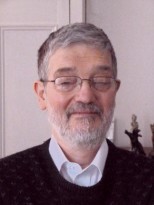
Molecules Designed for Chemical Network Memory and Non-Genetic Inheritance
Chris Gordon-Smith, SimSoup project: In this talk I will present a memory system based on an artificial chemistry. This is relevant as a ‘proof of concept’ for metabolism based Origin of Life theories, and in the field of biological and chemical computing. Each memory unit can be switched between three alternative active states. A unit maintains itself in a particular state using an autocatalytic reaction process. Switching between states occurs when an external stimulus triggers the autocatalytic process for the new state, along with an associated process that inhibits autocatalytic activity for the old state. I will show artificial molecular species with structures that support the autocatalytic and inhibiting processes. I will also present results from the SimSoup artificial chemistry simulator showing the operation of a 5-unit memory system with 243 alternative states (equivalent to just under 8 bits of memory). The design supports systems with more units, but computational requirements to run the simulator increase substantially. I will conclude the talk with a short review of some alternative network architectures for chemical memory and inheritance.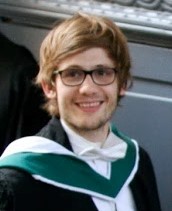
How congestion shapes cities: a physicist’s perspective
Remi Louf, Institut de Physique Théorique: In a rapidly urbanising world, understanding the behaviour of cities has broad implications. Indeed, while cities are known to foster creativity and economic growth, they also engender higher crime rates and pollution levels. It is therefore crucial to quantify these effects and understand the underlying processes if we want to design effective policies and make the urban transition as smooth as possible.Although the recent availability of data has brought fresh insights, most of the observed regularities remain unexplained. For instance, we find that quantities such as the total surface area, the total length of roads, the total daily driven distance scale non-linearly with population size. In this presentation, I will show how simple physical arguments and a bottom-up modelling approach allow us to understand these behaviours. I will discuss how, with simple approaches of this kind, we are able to identify some of the driving forces behind the evolution of urban systems. In particular, I will highlight the role of congestion, and its consequences on life in cities.

Epistatic constraints in evolution, theory and practice
Dr Guillaume Achaz, Atelier de BioInformatique: How constrained is life’s evolution? Can mutations occur in any order? What fundamental processes dictate how evolution can proceed? I will discuss some work on experimental and model fitness landscapes that aims at understanding what is the minimum set of rules that are needed to characterize constraints in evolving genetic systems. The work tries to maximize the fit between real biological data and theroretical models. In particular, I will illustrate how both data analysis and model building can feed each other and may utlimately converge. This project aims at taking a step further in our comprehension of the life as it was, is and will be.
Spin models of critical phenomena in systems with multi-scale dynamics
Dr Ondrej Hovorka, University of Southampton : This talk will give a general summary of computational models for studying the emergent non-equilibrium phenomena in interacting spin systems spanning a broad range of length- and time-scales. This will include the Langevin dynamics of a set of coupled stochastic ODEs to model thermal fluctuations in spin systems, the master-equation formalism of long timescale memory effects and hysteresis, and the cellular automaton approach to describe multiscale dynamics of avalanche systems, such as earthquakes for example. The individual approaches will be demonstrated using applications in biomedicine, optimisation of modern hard disk drive technologies, and to analysing the out-of-equilibrium phase transition behaviour in avalanching systems.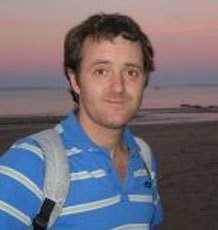
Games, networks, and climate change
Dr Hywel Williams, University of Exeter: The physical science basis of anthropogenic climate change is well established, yet effective political action to prevent its worst impacts has been hard to achieve. Policy depends on popular support, so it is important to understand how opinions are formed and when individuals will cooperate with potentially costly policies to tackle climate change. In this talk, I present results from two ongoing projects that explore different aspects of social action on climate change. The first project uses an experimental economics approach to understand when individuals will cooperate with collective action, framing the climate change issue as a “social dilemma” in which the collective benefits of preventative action conflict with the private costs of participation. In particular, we consider whether the existence of multiple possible solutions (e.g. developing geoengineering alongside mitigation) affects the likelihood of successful collective action. The second project uses data from the Twitter micro-blogging platform to map the social network of individuals who discuss climate change online. This analysis reveals a strongly polarised distribution of attitudes in the online climate debate, which has major implications for opinion formation and how consensus policy support might be achieved. The intellectual linkage between these two approaches lies in the grand challenge of understanding how – or if – large structured populations of self-interested individuals might be persuaded to take action on climate change.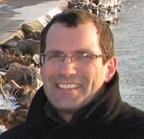
The complex challenge of achieving sustainable livelihoods in coastal Bangladesh
Dr Attila Lázár, University of Southampton: Delta environments support 500 million people globally, often at very high densities (often > 1000 people per sq. km.) reflecting high agricultural productivity and more broadly high availability of ecosystem services. The future of these environments is uncertain due to multiple threats such as global climate change (e.g. sea-level rise), upstream catchment changes (e.g. new big dams) and local changes (e.g. pumping of groundwater inducing subsidence and salinisation). Hence deltas are complex social-environmental systems where the continuum of change is driven by multiple interacting factors operating at different temporal and spatial scales. The ESPA Delta project is exploring these issues through the lens of ecosystem services and poverty alleviation in the Ganges-Brahmaputra-Meghna Delta case study. The project comprises more than 20 collaborating institutions in UK, Bangladesh, India and China and wide-ranging expertise from governance, to social science to natural science and engineering. The overarching goal is to understand the dynamic link between human well-being and ecosystem services in a changing environment. In addition, the research is conducted in a participatory manner with policy stakeholders (national and local levels) and the ultimate aim is to provide tools and insights which support national and sub-national planning. Hence the diverse strands of the project need to be integrated in a meaningful way, including allowing for the complex interactions and feedback mechanisms which can occur. This presentation provides an overview of the ESPA Deltas project and how it explores concepts in system dynamics and modelling (meta-models and emulators) to provide policy relevant insights about this complex system.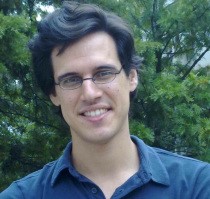
Climate Policy: How to Cooperate in an Uncertain World
Dr Francisco Santos, Instituto Superior Técnico, Lisbon: “The welfare of our planet stands as a perfect example of what scientists commonly refer to as public goods — a global good from which everyone profits, whether or not they contribute to maintain it. Indeed, reducing the effects of global warming has been described as one of the greatest public goods problems (or “games”) we humans face, and the one we cannot afford to lose. Unfortunately, individuals, regions or nations may opt to be “free riders”, hoping to benefit from the efforts of others while choosing not to make any effort themselves. Cooperation problems faced by humans often share this setting, in which the immediate advantage of free riding drives the population into the “tragedy of the commons”, the ultimate limit of widespread defection. Moreover, nations and their leaders seek a collective goal that is shadowed by the uncertainty of its achievement.In this seminar, I will discuss an evolutionary dynamics approach to a broad class of cooperation problems in which attempting to minimize future losses turns the risk of failure into a central issue in individual decisions. Our results suggest that global coordination for a common good should be attempted by segmenting tasks in many small to medium sized groups in which perception of risk is high and achievement of goals involves stringent requirements (whose meaning I will make precise). Moreover, whenever the perception of risk is low — as it is presently the case — we find that a polycentric approach involving multiple institutions is more effective than that associated with a single, global one, indicating that a bottom-up approach, setup at a local scale, provides a better ground on which to attempt a solution for such a complex and global dilemma. Finally, we show that, if one takes into consideration that individuals are interwoven in complex political networks, the chances for global coordination in an overall cooperating state are further enhanced.”
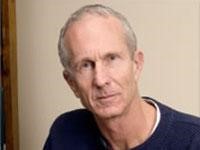
The economics of sustainability
Prof Doyne Farmer, University of Oxford: Achieving sustainability requires understanding the complex interactions between a vast number of systems including climate, economics, technological progress, geology, ecology, space science, population control, security, global politics, and mass psychology. Sustainability forces us to think clearly about our vision of the future, putting philosophy into direct contact with science. As scientists our job is to try to understand causes and effects, both by making predictions and by quantifying the vast uncertainties as best we can. My talk will explore several topics relating to my own work on sustainability, including the subtleties involved in properly discounting the value of the future relative to the present, the flaws in economic models of climate mitigation (and thus the huge uncertainties in their predictions), and my current efforts to predict technological progress (which is perhaps not quite as unpredictable as one might imagine). I will provide a few mathematical illustrations, but most of all, I will try to paint a vision of the complex challenge that we all face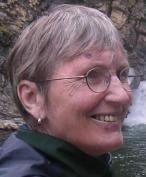
Improving the representation of cognitive agents in agent-based modelling and simulation
Prof Lin Padgham, RMIT: Many agent based simulations need to represent humans, their behaviour and their decision making. Although animals can often be modelled well by simple reactive rules based on environment state, this is often inadequate for modelling human behaviours. The Belief Desire Intention (BDI) framework is a well-developed theoretical and computational framework that is widely used in developing intelligent agent systems. Applications are developed by programming interacting agents with goals and plans, to provide a system which does some complex task (e.g. co-ordinating an electronic marketplace or logistics management for a large delivery company), typically in a dynamic environment. The execution engine of such systems then coordinates each agent’s selection of plans and goals, depending on the current situation. We describe how we have integrated a BDI platform with a commonly used ABMS platform (Repast) to take advantage of this more complex, but well structured, modelling of humans available in BDI programming systems/languages. We also describe a prototype tool to support domain experts and model developers in both understanding and developing the decision making model of an agent using a BDI platform. We also give a brief overview of the RMIT Intelligent Agents group.”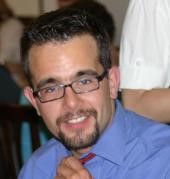
Chaos and noise in game theory and evolutionary dynamics
Dr Tobias Galla: The University of Manchester: “In the first part of the talk I will discuss the effects of intrinsic noise on the dynamics of evolutionary systems in game theory. These are conventionally described by deterministic differential equations, an approximation valid only for infinite populations. Demographic or intrinsic noise in finite populations can have profound consequences on the dynamics and lead to new phenomena such as extinction and fixation, and to noise-driven quasi cycles. I will describe how these can be characterised in simulations and with methods from statistical physics.In the second part of the talk I will discuss the outcome of learning in complicated games with a large number of moves. I will show that for a large range of randomly drawn games the outcome is high-dimensional chaos, limiting the ability of players to learn to play Nash equilibria. I will discuss consequences for modelling approaches in economics and finance, especially those built around equilibrium concepts.
Phase transitions in network growth: from street patterns to neural networks
Enzo Nicosia, Queen Mary University: Studying how a system has evolved over time can help unravelling the elementary mechanisms responsible of its formation and understanding the complexity of the wiring patterns connecting its constituent units. We have recently found that the evolution of spatially-embedded systems, such as urban street patterns and neural networks, can be characterised by interesting phase transitions, resulting in abrupt changes of some structural descriptor of the system. In this talk we will discuss two examples of phase transition in the growth of a network, respectively corresponding to the evolution over 200 years of a large metropolitan area in Italy and to the growth of the Celegans nematode’s neural systems, and we will present reasonable models able to accurately reproduce the observed transitions.Some random walks in space weather
Mervyn Freeman. British Antarctic Survey, Cambridge: Space weather, the natural variability of near-Earth space, is a hazard to modern society, with the potential to affect satellite services and electricity supply. It is the fourth highest natural hazard risk on the Government’s National Risk Register, alongside heatwaves and low temperatures. Arguably the greatest source of uncertainty is the substorm, an earthquake-like disruption of near-Earth space that eludes deterministic prediction. In this talk, I will show how substorm occurrence may be understood as a random walk towards an absorbing barrier, similar to the Gerstein-Mandelbrot model of neuron firing in the brain. I will discuss the limits of prediction and similarities to the space weather of Jupiter and Saturn.Attempting to model all life on earth – a proof of concept General Ecosystem Model
Dr Mike Harfoot, United Nations Environment Program and Microsoft Research Cambridge: Over the past few years, Microsoft Research and the United Nations Environment Programme World Conservation Monitoring Centre (UNEP-WCMC), both in Cambridge, UK, have built a global ecosystem model for terrestrial and marine ecosystems. Called the Madingley model, it captures the broad-scale structure and function of ecosystems around the world by simulating processes — including feeding, reproduction and death — that drive the distribution and abundance of organisms. From the relationship between the mass of individual organisms and how long they live, or the effects of human perturbations such as hunting, to the distribution of biomass across Earth, the model’s outputs are broadly consistent with current understanding of ecosystems. Global ecosystem models such as the Madingley model could radically improve understanding of the biosphere and help inform policy decisions about biodiversity and conservation.Population-based microbial computing
Prof Martyn Amos, Manchester Metropolitan University: Synthetic biology is an emerging research field, in which engineering principles are applied to natural, living systems. A major goal of synthetic biology is to harness the inherent “biological nanotechnology” of living cells for the purposes of computation, production, or diagnosis. As the field evolves, it is gradually moving away from a single-cell approach (akin to using standalone computers) to a distributed, population-based approach (rather like using networks of connected machines). In this talk we present several recent results from our group, describing various aspects of this new form of biological engineering. Specifically, we show, using computational studies aligned with laboratory work, how reconfigurable logic devices may be constructed using bacteria, how these may be used as the basis for a “client-server” model of microbial computing, and how bacterial conjugation may provide a new (and, potentially, very rich) communication scheme.Bubbles and a planet: the connection and why it matters
Dr Helen Czerski, University College London: Gases and particles are constantly being exchanged between the ocean and the atmosphere, affecting the chemistry of both these huge systems. The main gas of interest is carbon dioxide, since about a third of the extra CO2 that humans are putting up into the atmosphere is being transferred to the oceans and that process does not happen evenly across the world’s oceans. This exchange is affected by a range of environmental parameters, including wind speed, temperature and biological conditions in the water. My main interest is the contribution that the bubbles from breaking waves make. We have just spent six weeks at sea in the North Atlantic, collecting data on air-sea exchanges in high wind conditions, and we now have a very extensive data set for analysis. I would love to find new ways of making use of this data set, and I’m interested in any ideas out there for how to do it better
